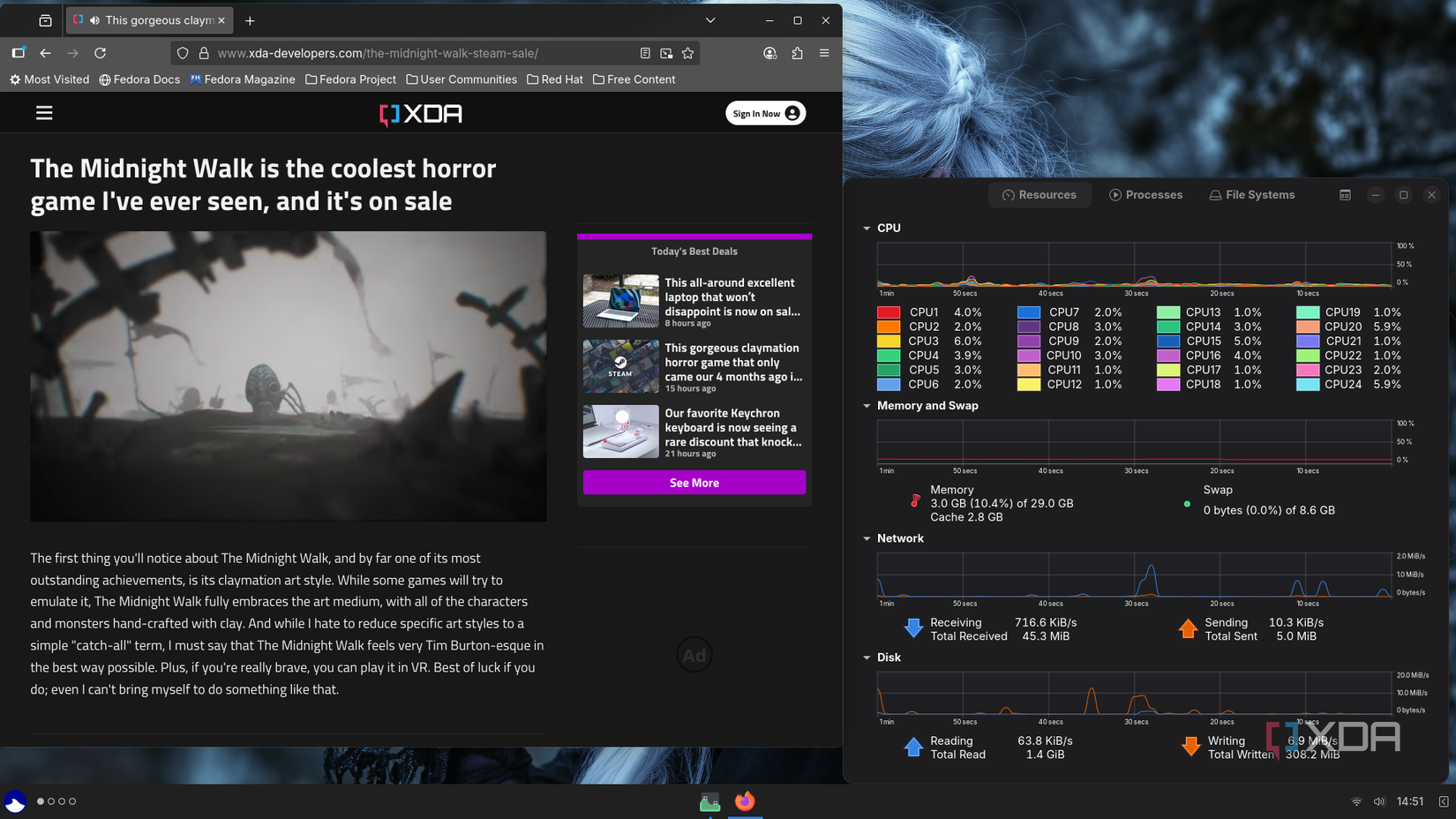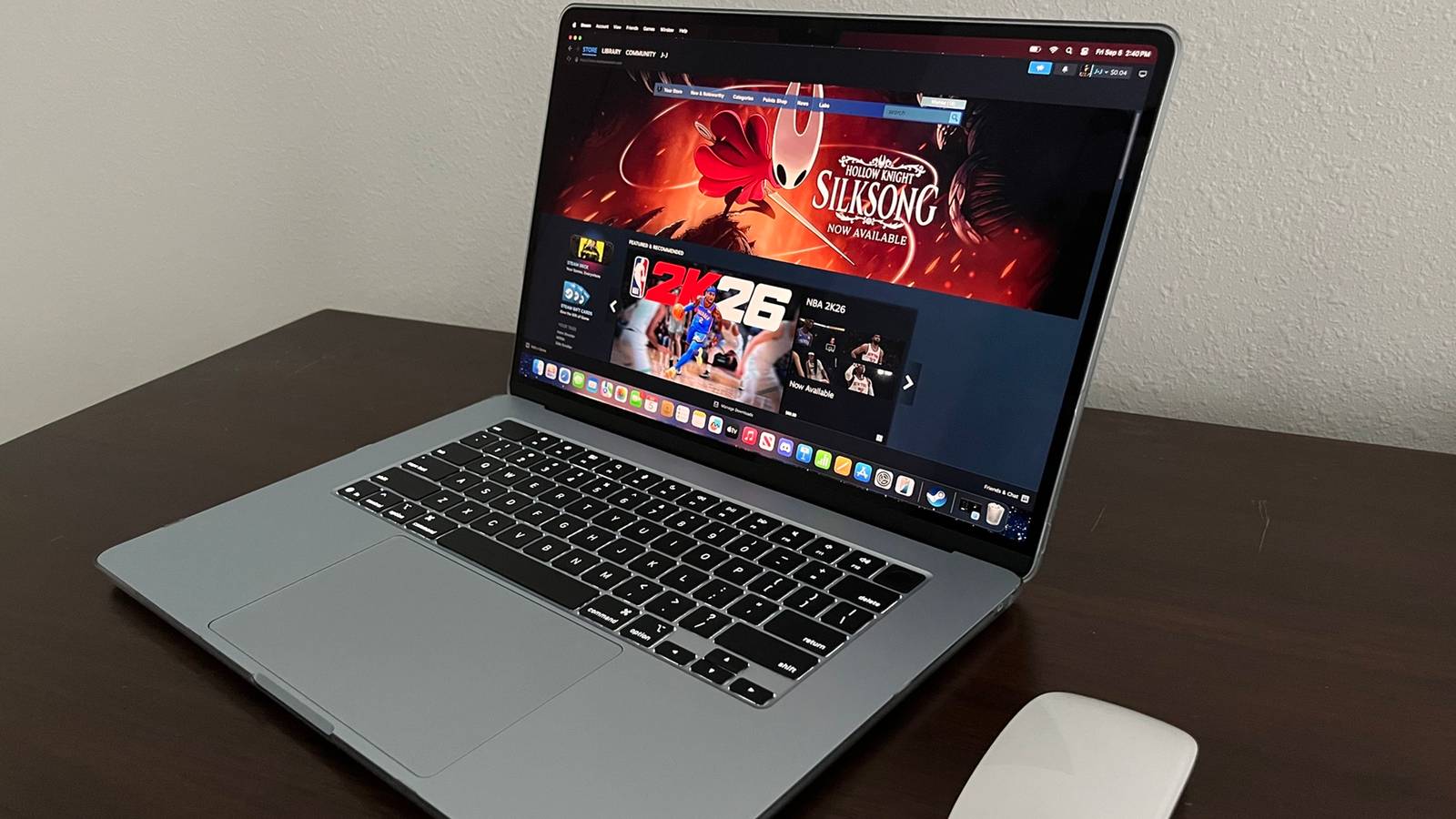Linux distributions have always had a reputation for offering choice, sometimes to the point of overwhelming new users. Fedora itself is known for being cutting-edge, but it often requires extra setup before it feels fully ready. Ultramarine Linux builds upon that same base and smooths out the rough edges, aiming to be a system that “just works” without sacrificing Fedora’s strengths. It is a distribution that stays out of your way so you can focus on your work rather than constant tinkering.
Ultramarine Linux succeeds by offering a Fedora experience that requires less setup and feels ready to use immediately.
The thesis behind Ultramarine is simple: make Fedora more approachable. Instead of spending your first hours setting up repositories, finding codecs, and enabling drivers, Ultramarine does the heavy lifting in advance. That makes it attractive for beginners who just want a functional system, but it also appeals to experienced users who want a Fedora-like workflow with less initial friction. The result is a polished spin that emphasizes ease and stability without locking you in.
What Ultramarine adds to Fedora to enhance your Linux experience
Convenience features that simplify your first boot
One of the biggest advantages Ultramarine offers is a set of tweaks that cut down on post-install setup. By including multimedia codecs, enabling the RPM Fusion repository, and adding its own Terra repository, it ensures access to a broader range of software right away. You do not have to hunt down instructions to get things like media playback working. This is a welcome change for anyone who has been burned by Fedora’s stricter defaults.
Another subtle but significant improvement is the choice of default shell. Ultramarine uses Zsh instead of Bash, which feels more modern and interactive out of the box. Many advanced Linux users eventually install and configure Zsh themselves, but Ultramarine saves you that step. These details help the system feel complete from the first time you log in. It is not about adding flashy extras, but instead smoothing the areas where new users often stumble.
Ultramarine also bundles in driver support that Fedora leaves out. This makes life easier if you are using hardware that might otherwise need manual configuration. For example, Wi-Fi and GPU drivers, which can be tricky to install, are often handled with minimal effort here. It may not sound exciting, but it is the difference between a smooth install and a frustrating one. This approach reflects Ultramarine’s core philosophy: less hassle, more productivity.
Choice of desktop environments with an easy route to change
Editions tailored for different user styles
Ultramarine offers several editions, each built around a popular desktop environment. The Flagship edition ships with Budgie, a desktop that combines simplicity with enough polish to feel modern and elegant. For those who prefer other styles, GNOME, KDE Plasma, and Xfce editions are also available. This variety ensures that you do not need to dig through a lengthy setup process just to get the look and feel you want.
What really sets Ultramarine apart here is the available Hop tool. Once installed, it allows you to switch between editions without requiring a complete reinstall. If you start with Budgie but later decide you would rather use KDE Plasma or Xfce, Hop lets you migrate seamlessly. This lowers the barrier to experimenting with different workflows. For newcomers, it removes the anxiety of choosing the wrong option at installation time.
When changing editions. Ultramarine Hop calls dnf to install the necessary packages. You'll need to restart for the newly chosen desktop environment to take over, but it's a much easier process than I've seen on any other flavor of Linux.
Each desktop edition is configured with sensible defaults so you can get straight to work. Budgie aims for balance, KDE offers power and customization, GNOME brings consistency, and Xfce delivers a lightweight, efficient option for older or resource-constrained machines. The ability to pick or change easily highlights Ultramarine’s mission: flexibility without unnecessary complexity. Instead of needing to build everything from scratch, you get a desktop tuned to be usable immediately.
Stability and performance excel from first boot

Because Ultramarine is based on Fedora, it inherits a strong foundation. You receive regular updates, a modern kernel, and Fedora’s emphasis on security through features such as SELinux. This means the system stays current without sacrificing stability. For users who value both security and access to up-to-date software, that is an appealing combination. Ultramarine does not alter Fedora’s DNA; it simply enhances the user experience surrounding it.
System requirements are modest, though heavier desktop environments like KDE or GNOME naturally benefit from more memory and storage. A 64-bit processor and 4GB of RAM will be enough to get started, though 8GB or more is recommended for smoother performance. Installation feels seamless, with a live ISO that lets you test before committing. Once installed, the system runs much like Fedora, only with fewer rough edges to smooth out.
Performance-wise, Ultramarine does not weigh down your machine with unnecessary extras. It respects Fedora’s lightweight and efficient base, meaning it runs well on both modern hardware and somewhat older systems. The result is a Linux distribution that feels fast without being stripped down to the point of inconvenience. Stability, performance, and usability are all balanced in a way that makes sense for most users.
Why not just use the original Fedora distribution?
Fedora already offers flexibility for many users
Some might argue that Ultramarine is unnecessary if Fedora already provides what you need. After all, enabling repositories, installing codecs, and configuring a shell are not difficult tasks for experienced Linux users. Fedora gives you a clean starting point with minimal extras, which appeals to those who prefer to craft their system by hand. For these users, Ultramarine’s approach might feel redundant.
Another consideration is that Fedora’s strict defaults have a reason behind them. By excluding specific drivers or codecs, Fedora avoids potential licensing conflicts and support headaches. Ultramarine takes a different stance by including them, but that could lead to rare instances where updates cause issues Fedora would not normally face. Users who like Fedora’s philosophy of keeping things lean and uncomplicated might see Ultramarine as adding unnecessary layers.
There is also the matter of community and documentation. Fedora has a large user base and official support channels, while Ultramarine remains more niche. That can mean fewer troubleshooting guides or forum posts when you hit a problem. If you are the type who likes to solve issues by searching community discussions, Fedora’s size can be an advantage. Ultramarine has its strengths, but it does not yet match Fedora’s visibility.
Why Ultramarine is an attractive choice for new and experienced Linux users
The value of polish and time savings

While Fedora’s clean slate approach is appealing to some, Ultramarine is designed for people who do not want to spend their first evening configuring basics. The time saved by having repositories, codecs, and drivers preloaded is significant, especially for newcomers. Even advanced users may appreciate skipping those early steps when setting up a fresh system. It is less about capability and more about convenience.
Instead of spending your first hours setting up repositories, finding codecs, and enabling drivers, Ultramarine does the heavy lifting in advance
Ultramarine also lowers the barrier to entry for people exploring Linux for the first time. Fedora’s setup can be intimidating if you are not familiar with package managers, repos, or shell configuration. By smoothing out those steps, Ultramarine creates a path where new users can focus on learning Linux itself rather than wrestling with setup hurdles. That is an important distinction when trying to grow the Linux user base.
Finally, the ability to switch desktop environments with Hop is something Fedora simply does not offer in the same way. It adds a flexibility that feels more approachable and forgiving. Ultramarine is not trying to replace Fedora, but to offer a refined option for those who prefer less friction. In that sense, it fills a niche that Fedora alone does not quite address.
Ultramarine lives up to its promise and really does 'just work'
Ultramarine Linux succeeds by offering a Fedora experience that requires less setup and feels ready to use immediately. It maintains the strengths of Fedora while smoothing out common pain points, making it ideal for newcomers and busy users alike. If you value a distribution that “just works” without pulling you into constant configuration, Ultramarine delivers on that promise.

This Fedora-based Linux distribution works great on most PCs out of the box with very little tweaking needed.
.png)











 English (US) ·
English (US) ·